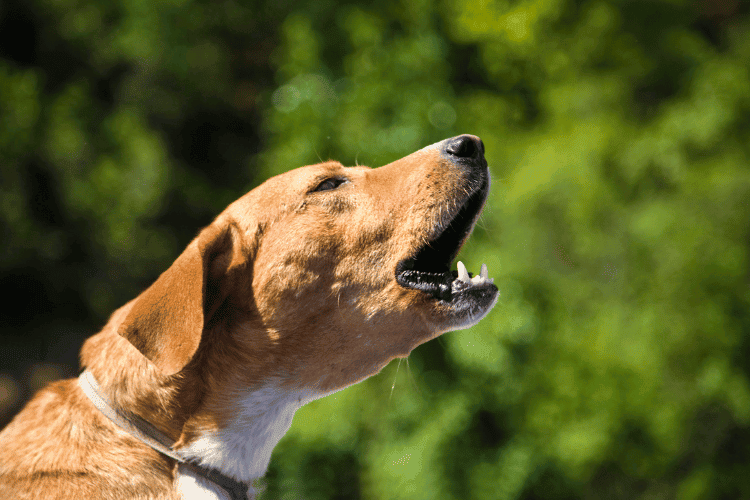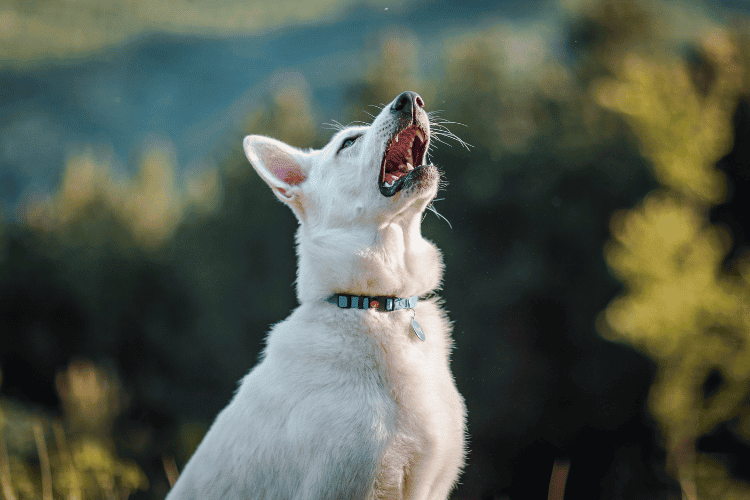Reverse sneezing, a peculiar behavior in dogs, often leaves owners curious and concerned. This blog will explain what reverse sneeze in dogs is its causes, symptoms, and easy remedies. While it might sound like a worrisome issue, reverse sneezing is usually harmless and brief. We’ll explore common triggers like irritants and excitement, and cover signs like rapid inhalation and extended neck. Additionally, we’ll share comforting techniques, such as throat massage and staying calm. By the end, you’ll have a better understanding of your Canine nasal irritation episodes and how to help them when needed.
Understanding Canine Reverse Sneezing
Dog choking on air, a common but odd behavior, can startle pet owners. It’s like a sudden inhale instead of a regular sneeze. Triggers include irritants, excitement, or even eating too fast. Dogs might stand still, snort, or stretch their necks during an episode. Remember, it’s usually harmless and brief. Calmly soothing your pet, gently massaging their throat, or covering their nostrils can help. If episodes become frequent or other symptoms appear, a vet’s advice is valuable. Understanding reverse sneezing lets you support your furry friend and offer comfort when they need it.
Inspiratory Paroxysmal Respiration in Dogs
The pharyngeal Gag Reflex in Canids refers to a sudden and intense inhalation of air through a dog’s nose, often accompanied by snorting sounds. These episodes might appear alarming but are typically harmless. It can occur due to various triggers such as excitement, irritants, or even drinking water too quickly. During these spasms, dogs may extend their necks and make distinct noises. While brief, if these episodes become frequent or cause concern, consulting a vet is advisable. Understanding this phenomenon helps dog owners provide comfort and reassurance to their furry companions during such episodes.
Is Reverse Sneeze in Dogs Dangerous
Reverse sneezing in dogs is typically not dangerous. It’s a common reflex caused by irritants, excitement, or quick eating. While it might appear alarming, episodes are usually brief and harmless. However, if your dog experiences frequent or prolonged episodes, consult a vet to rule out underlying issues. Keep an eye out for additional symptoms like dog nasal discharge or difficulty breathing. Remember, most cases are normal and don’t require immediate medical attention, but professional advice can provide peace of mind about your pet’s well-being.
The Midnight Reverse Sneezing in Pups
When your puppy reverse sneezes at night, it’s often due to excitement, irritants, or dog allergies. Although these episodes can be worrisome, they’re typically harmless. Calming your pup and creating an allergen-free sleep environment can ease the situation. If the issue persists, seeking veterinary advice is advisable. While midnight reverse sneezing might disrupt sleep, with proper care, your puppy can soon rest peacefully.
Anxiety Linked to Dog Breathing Spasms
Recent studies suggest a connection between anxiety and dog breathing spasms. When dogs experience stress or anxiety, it can trigger episodes of irregular breathing patterns. These spasms might manifest as rapid or labored breathing, often mistaken for other respiratory issues. Understanding this link can help pet owners better address their dog’s well-being. If your dog exhibits breathing spasms in stressful situations, consulting a veterinarian can provide guidance on managing anxiety and improving their overall respiratory health.
Reverse Sneeze in Dogs Cause
Seeing your adorable puppy experience reverse sneezing can be concerning, but understanding its causes can help put your worries to rest. Common reasons behind backward sneezing in dogs, shedding light on this peculiar behavior.
- Irritants in the Air: Dust, pollen, or strong scents can trigger reverse sneezing in puppies, causing them to quickly inhale air.
- Excitement and Energy: Puppies are full of energy. Overexcitement or playing vigorously can lead to sudden reverse sneezing episodes.
- Foreign Objects: Curious puppies might inhale tiny objects accidentally, leading to momentary reverse sneezing as their body reacts.
- Fast Eating or Drinking: Puppies can get too enthusiastic during meals, inhaling their food or water quickly, which can irritate their throat.
- Leash Pulling: When puppies pull on their leash during walks, it puts pressure on their neck, possibly triggering reverse sneezing.
- Teething Discomfort: Teething puppies might reverse sneeze due to discomfort in their mouth and throat.
- Nasal Mites or Allergies: These issues can irritate a puppy’s nasal passages, causing them to reverse sneezing as a response.
Symptoms of Backward Snorting Episodes in Dogs
Our furry friends, dogs, have their own unique ways of communicating discomfort. One such instance is dog breathing spasms, which can understandably worry pet owners. Here, we’ll break down the symptoms of dog breathing spasms, shedding light on what signs to look out for and when to seek help.

- Irregular Breathing: Watch for sudden changes in your dog’s breathing pattern.
- Coughing and Wheezing: If your dog develops a persistent cough or wheeze, it might indicate breathing spasms.
- Visible Discomfort: Observe if your dog seems uncomfortable, restless, or struggling to relax due to breathing difficulties.
- Extended Neck: Dogs might stretch their necks forward while trying to clear their airways during spasms.
- Nostril Flaring: Flaring nostrils during regular breathing might indicate increased effort in breathing.
- Gagging or Choking Sounds: Unusual sounds like gagging or choking can be indicative of spasms.
Reverse Sneeze in Dogs Treatment
When it comes to treating reverse sneezing in pets, simplicity is key. If your pet has an episode, gently stroke their throat to ease discomfort. Offering a sip of water may help if eating or drinking triggers it. Stay composed, as your calm presence reassures them.
- Stay Calm: When your dog sneezes backward, stay calm to comfort them.
- Rub Their Throat: Gently massage their neck to help them relax.
- Cover Nostrils: Hold their nostrils briefly to make them swallow and stop sneezing.
- Offer Water: Give them a sip of water if eating fast triggered it.
- Change Triggers: If cleaning products bother them, avoid using them around your dog.
- Use Humidifier: Adding moisture to the air can help their sensitive nose.
- Check Allergies: Discuss allergies with a vet to rule out irritation.
Consult a Veterinarian When a Dog Snorting Fits
If your dog’s snorting fits, known as reverse sneezing, become too frequent or last longer than usual, it’s time to consult a veterinarian. While reverse sneezing is often harmless, persistent or prolonged episodes could indicate an underlying issue. If your furry friend shows other signs like difficulty breathing, nasal discharge, or coughing, seeking a vet’s advice is wise. Veterinarians can provide proper guidance to ensure your dog’s health and well-being.
- Duration: If symptoms continue for an extended period or worsen, consulting a vet is recommended.
- Changes in Behavior: If your dog’s behavior significantly changes, such as reduced activity or appetite loss, it’s a sign to consult a professional.
- Distress: If your dog seems visibly distressed, with difficulty in breathing or excessive panting, seek immediate help.
- Underlying Health Issues: Dogs with pre-existing conditions like heart or respiratory problems are more vulnerable to severe breathing spasms. Prompt medical advice is crucial.
Conclusion
Reverse sneezing might startle you, but it’s usually a harmless and temporary behavior in dogs. By understanding the causes, symptoms, and simple remedies, you can provide comfort to your canine companion during these episodes. Remember, your vet is your best resource for any concerns regarding your dog’s health, so don’t hesitate to reach out if you’re ever unsure.
FAQs
How to Stop Reverse Sneezing in Dogs?
To stop reverse sneezing in dogs, try massaging their throat, covering their nostrils briefly, or offering water. These actions can help alleviate the spasm. If episodes are frequent or severe, consult a veterinarian to ensure there are no underlying health issues contributing to the reverse sneezing.
Can Reverse Sneeze in Dogs be Linked to Congestive Heart Failure? What’s the Connection and What Should You Watch For?
While Canine Nasal Gagging is typically harmless, it can rarely be associated with congestive heart failure. If your dog experiences frequent reverse sneezing along with symptoms like coughing, difficulty breathing, or lethargy, it’s essential to consult a veterinarian. A professional evaluation can determine whether there’s an underlying heart issue requiring treatment.
Are there any specific breeds more prone to experiencing Canine Inspiratory Snort at night?
Yes, certain breeds are more susceptible to reverse sneezing at night, including brachycephalic breeds like Bulldogs, Pugs, and Boxers. Their unique nasal anatomy can make them more prone to episodes. However, reverse sneezing can occur in any breed and is generally harmless.
How can pet owners differentiate between regular panting and abnormal breathing patterns in their dogs?
To differentiate between regular panting and abnormal breathing in dogs, observe the rhythm and effort. Regular panting is usually steady and occurs after exercise or in warm weather. Abnormal breathing includes rapid, shallow breaths, wheezing, coughing, or extended neck postures. If your dog’s breathing seems unusually labored or persistent, consulting a vet is advisable.


